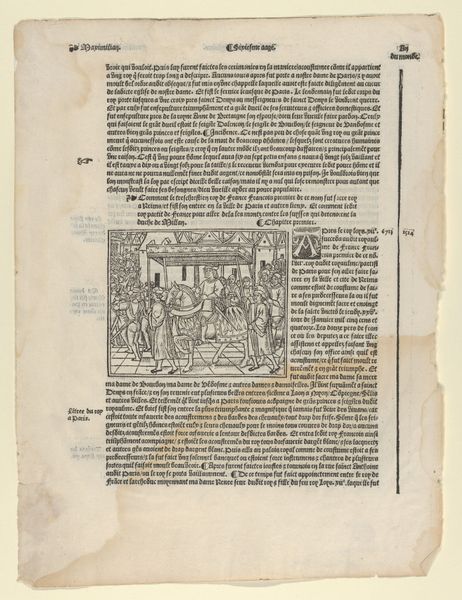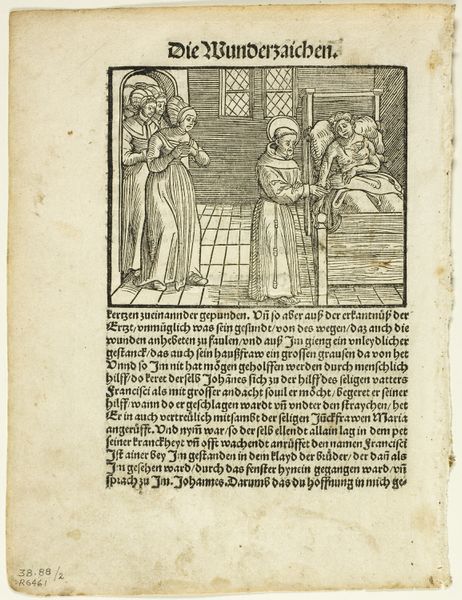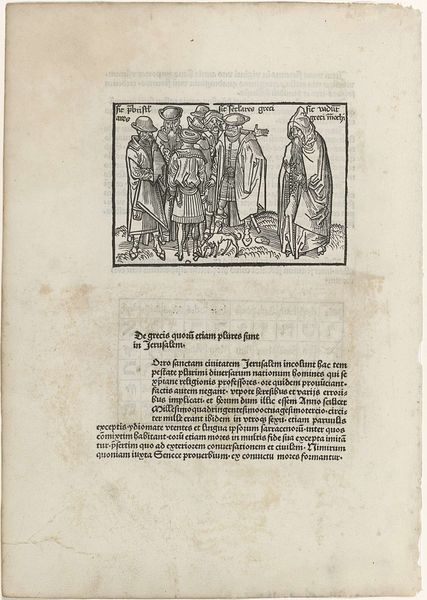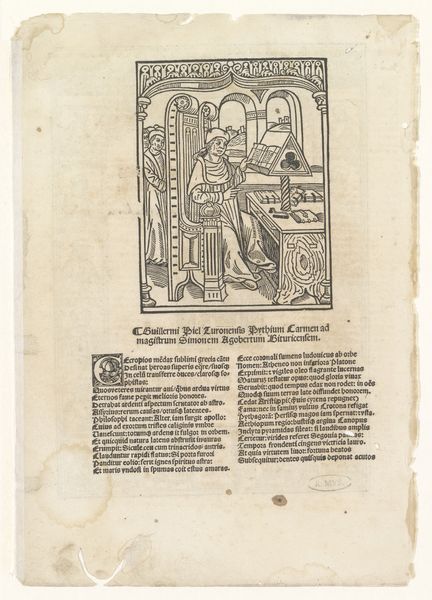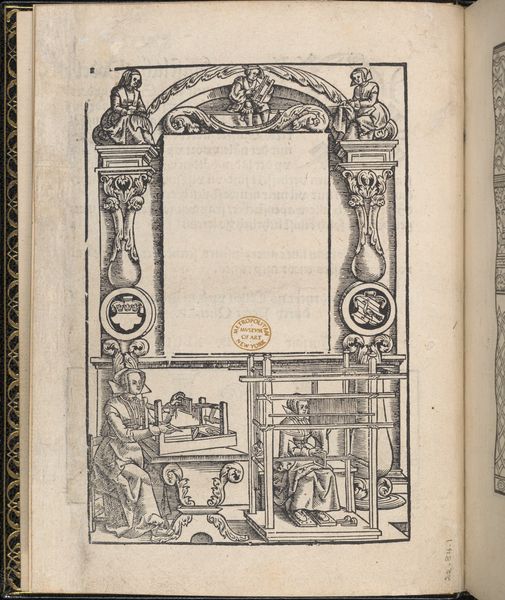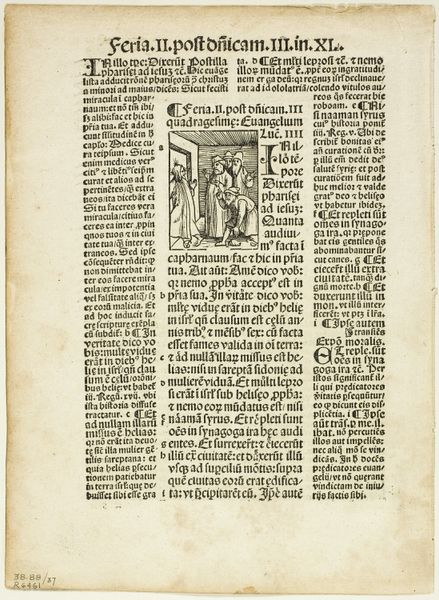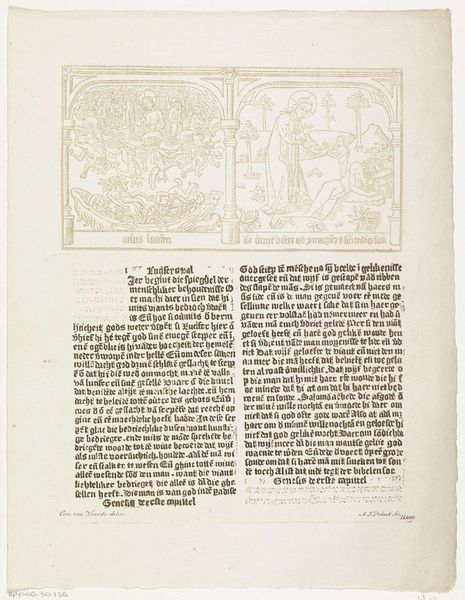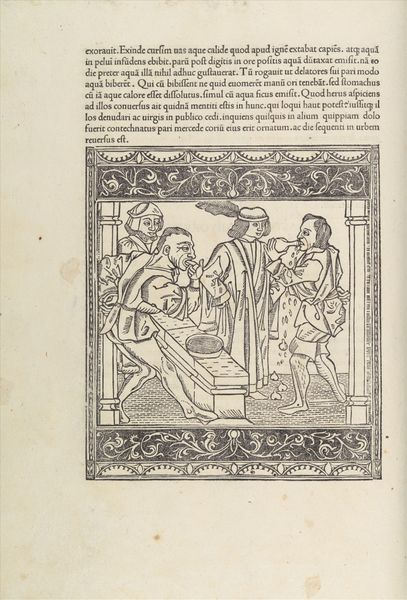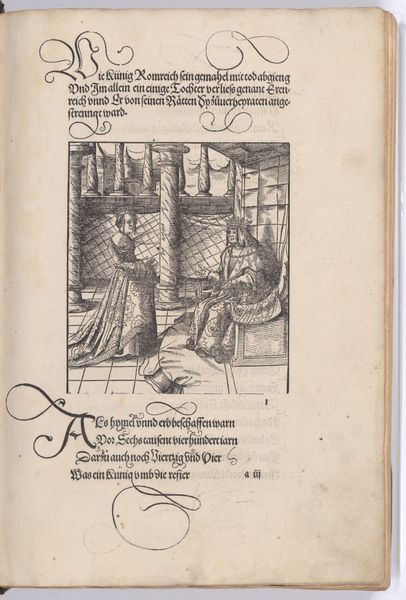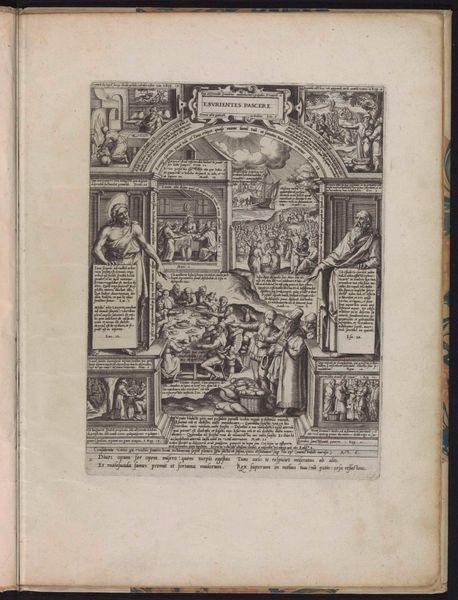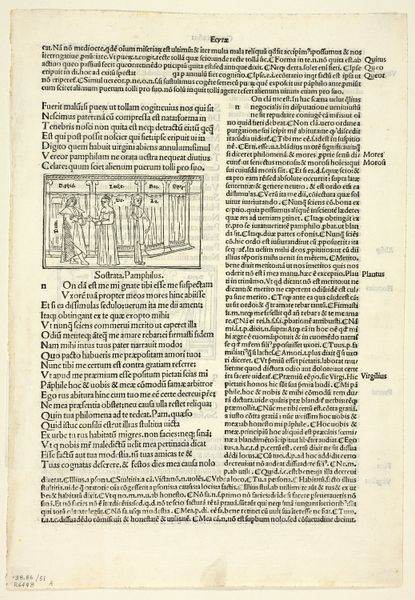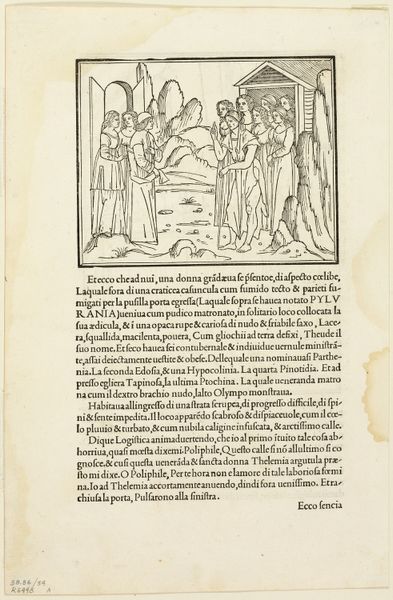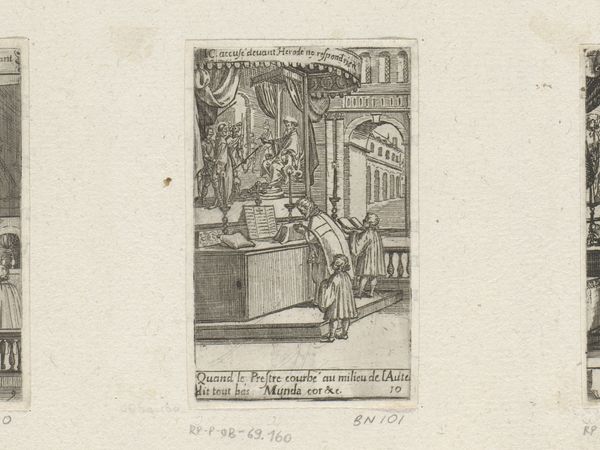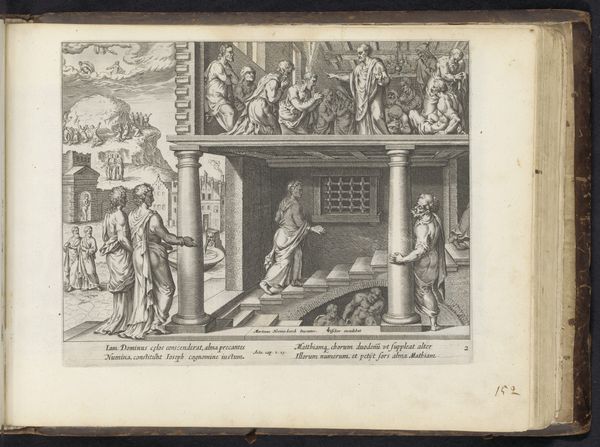
drawing, print, paper, woodcut
#
drawing
# print
#
book
#
paper
#
woodcut
#
genre-painting
#
history-painting
#
northern-renaissance
#
academic-art
Dimensions: height 214 mm, width 155 mm
Copyright: Rijks Museum: Open Domain
Editor: Here we have a woodcut on paper titled "Teacher and Student Before a Bookshelf", dating back to sometime between 1504 and 1515. The scene feels rather intimate, a master seemingly imparting knowledge to a pupil beside a crammed bookshelf. What do you see in this piece? Curator: From a formalist perspective, my eye is immediately drawn to the interplay of light and shadow created by the woodcut technique. Observe how the density of the lines dictates the form, defining the figures and the architectural space with remarkable economy. It’s interesting to note how the composition directs the viewer's eye to the relationship between the two figures; note, if you will, that the background is treated almost as texture alone. Editor: That's an interesting take. I was focusing more on the labels, 'Magister' and 'Discipulus'— teacher and disciple, but those were literally written in. Is it intentional that the composition leads us away from those verbal indicators? Curator: Precisely. While inscriptions and the text above establish a narrative context, the art itself succeeds beyond this didactic purpose, focusing the observer's experience not on symbolic representation but on artistic and textural relationships. Does that emphasis on intrinsic forms resonate with you? Editor: It does. I appreciate that the limitations of the woodcut force us to consider how much is achieved through relatively simple means. It reframes the print as more than just a historical snapshot. Curator: Indeed. We understand how it presents more complex forms, of itself; in this case, line, light and space serve to reinforce and reflect the narrative implications. Editor: That's given me a new lens to view early prints and drawings; thinking less about *what* is shown, and more on *how* it’s shown.
Comments
No comments
Be the first to comment and join the conversation on the ultimate creative platform.
